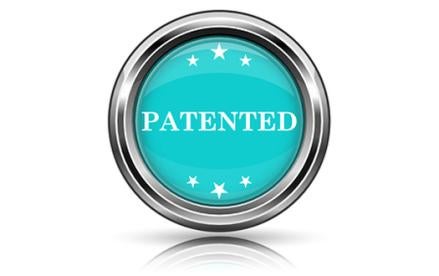On May 4, 2016, the USPTO released a “May 2016 Subject Matter Eligibility Update” (“Update”) providing guidance to patent examiners on formulating a subject matter eligibility rejection and evaluating an applicant’s response to that rejection. The USPTO concurrently released new life science examples to assist examiners and applicants evaluate whether claimed discoveries satisfy 35 U.S.C. § 101 in view of recent decisions by the U.S. Supreme Court and the Federal Circuit. Of importance to those seeking to patent diagnostic methods key to personalized medicine, the recent update provides guidance on whether diagnostic and treating claim present patent eligible subject matter.
Diagnosing and Treating Julitis
All new examples build on and further illustrate the USPTO’s two-part analysis described in the USPTO’s Interim Eligibility Guidance, wherein if a claim is decided to be directed to an abstract idea, a law of nature, or a natural phenomenon, then the claim must be evaluated to determine if the claim elements taken individually and in combination, amount to something significantly more than the exception itself.
New example 29 “diagnosing and treating julitis” is noted to illustrate the application of the significantly more analysis to diagnostic and treatment claims using a hypothetic autoimmune disease – julitis. The hypothetical patent applicant discovered the presence of a protein known as “JUL-1” in a patient and discovers that it is a maker for the disease. The applicant discloses in her application that one can detect the marker “JUL-1” by routine and conventional methods such as by physical biopsy of patient tissue, or by immunoassays in which a patient sample is contacted with an antibody to the JUL-1 protein, and then by detecting any complex formed between the protein and antibody using a laboratory technique such as fluoroscopy. Antibodies that can be used for the detection of the JUL-1 protein-antibody complex include naturally occurring antibodies (such as a polyclonal antibody) and a non-naturally occurring antibody (for example a porcine antibody or a monoclonal antibody).
The example notes that prior to applicant’s invention, porcine antibodies were not routinely or conventionally used to detect human proteins such as JUL-1. The example also states that prior to applicant’s invention, julitis was conventionally treated with anti-tumor necrosis factor (TNF) antibodies, but not all patients were responsive to the TNF therapy. Applicant discovered that certain patients, even those non-responsive to TNF therapy, did respond to treatment with vitamin D. Vitamin D had not previously been used to treat julitis.
Representative Claims
Seven exemplary claims are provided by the USPTO, and reproduced below:
1. A method of detecting JUL-1 in a patient, said method comprising:
a. obtaining a plasma sample from a human patient; and
b. detecting whether JUL-1 is present in the plasma sample by contacting the plasma sample with an anti-JUL-1 antibody and detecting binding between JUL-1 and the antibody.
2. A method of diagnosing julitis in a patient, said method comprising:
a. obtaining a plasma sample from a human patient;
b. detecting whether JUL-1 is present in the plasma sample by contacting the plasma sample with an anti-JUL-1 antibody and detecting binding between JUL-1 and the antibody; and
c. diagnosing the patient with julitis when the presence of JUL-1 in the plasma sample is detected.
3. A method of diagnosing julitis in a patient, said method comprising:
a. obtaining a plasma sample from a human patient;
b. detecting whether JUL-1 is present in the plasma sample by contacting the plasma sample with a porcine anti-JUL-1 antibody and detecting binding between JUL-1 and the porcine antibody; and
c. diagnosing the patient with julitis when the presence of JUL-1 in the plasma sample is detected.
4. A method of diagnosing julitis in a patient, said method comprising:
a. obtaining a plasma sample from a human patient;
b. detecting whether JUL-1 is present in the plasma sample by contacting the plasma sample with antibody mAb-D33 and detecting binding between JUL-1 and antibody mAb-D33; and
c. diagnosing the patient with julitis when the presence of JUL-1 in the plasma sample is detected.
5. A method of diagnosing and treating julitis in a patient, said method comprising:
a. obtaining a plasma sample from a human patient;
b.detecting whether JUL-1 is present in the plasma sample;
c. diagnosing the patient with julitis when the presence of JUL-1 in the plasma sample is detected; and
d. administering an effective amount of topical vitamin D to the diagnosed patient.
6. A method of diagnosing and treating julitis in a patient, said method comprising:
a. obtaining a plasma sample from a human patient;
b. detecting whether JUL-1 is present in the plasma sample;
c. diagnosing the patient with julitis when the presence of JUL-1 in the plasma sample is detected; and
d. administering an effective amount of anti-tumor necrosis factor (TNF) antibodies to the diagnosed patient.
7. A method of treating a patient with julitis, the method comprising administering an effective amount of anti-TNF antibodies to a patient suffering from julitis.
Of the exemplary claims, claims 1 and 3-7 were deemed to satisfy 35 U.S.C. § 101. Claim 2 is not eligible, because the claim is directed to a judicial exception without reciting something more than the exception itself.
Claim 1 is eligible and claim 2 is not, even though claim 2 (as compared to claim 1) recites the additional element of “diagnosing the patient with julitis when the presence of JUL-1 in the plasma sample is detected.” Claim 1 is a straight detection claim whereas claim 2, with the addition of element “c” correlates the detection of the JUL-1 protein with a positive diagnosis of julitis. As explained by the Update, it is the absence of the diagnosis step that saves the claim because it fails to recite any judicial exception. The Update explains that although nature-based product limitations are recited in the claim (e.g., the plasma sample and JUL-1), an analysis of the claim as a whole indicates that the claim is focused on a process of detecting the JUL-1 protein, and not a product per se. For that reason, there is no reason to evaluate the claim under the second of the two step analysis, i.e., whether the claim recites something more than the judicial exception itself.
Claim 2 is not eligible because it recites a judicial exception – element c. drawn to the correlation of JUL-1 and julitis). Therefore the claim as whole must be evaluated to determine if it recites something more than the exception itself. The claim elements of gathering the sample and using conventional techniques to determine if JUL-1 is present in the sample, are conventional and routine and do not add something beyond the judicial exception. The example contrasts this claim to the claims considered under Diehr, which were individually conventional, added “something more” when combined to improve a technical field.
Similar to claim 2, claim 3 is directed to a judicial exception because it recites an element requiring a diagnosis of julitis. However, because the claim requires the use of a porcine antibody which was not known in the art for the detection of human JUL-1 protein, the use of the porcine antibody is an unconventional step that is more than a mere instruction to apply the correlation and critical thinking step (the judicial exception) using well-understood, routine or conventional techniques in the field. For the same reason, claim 4, requiring the use of the antibody mAb-D33 (which was not routinely used to detect human JUL-1 protein), is patent eligible.
Claims 5 and 6 are directed to diagnosing julitis by detecting if JUL-1 protein is present in a patient sample and then administering a particular therapy to the patient diagnosed with julitis. Claim 5 is eligible because the step of administering vitamin D to treat julitis was not conventional at the time the invention was made, and therefore the administration step adds “something more” to the claim. For claim 6, the administration of the particular therapy adds meaningful limits on the use of the exception steps of the claim and therefore is patent eligible.
Claim 7 is patent eligible because, while reciting a nature-based product limitation (the anti-TNF antibodies), an analysis of the claim as a whole indicates that the claim is focused on the practical application of that product and therefore is patent eligible.
Patents and Personalized Medicine
The Update and in particular, the example directed to diagnostic and therapeutic methods, is welcomed by those seeking patent protection for diagnostic methods that are routinely used in personalized medicine. The Update is a clear indication that diagnostic methods, if not broadly drawn only to a correlation or relationship between a detected marker in a patient sample and a disease state, are patentable subject eligible.




 i
i


